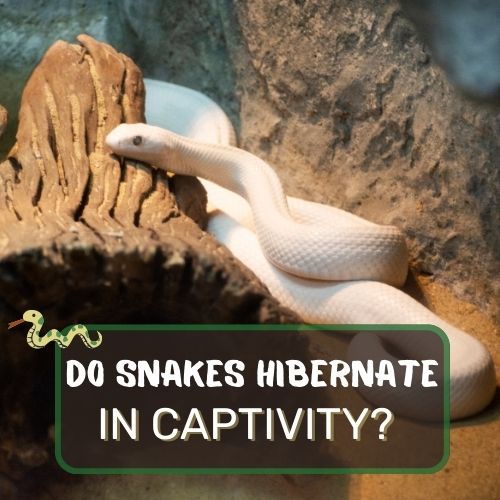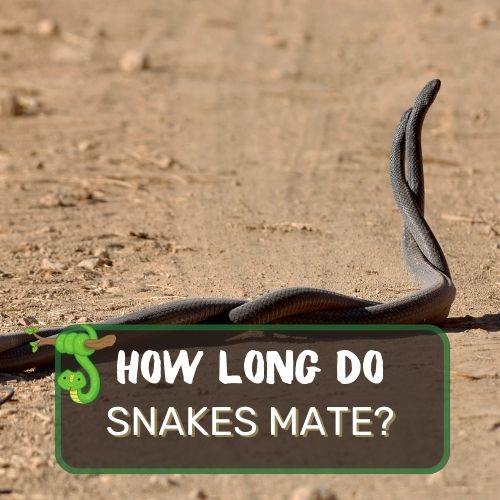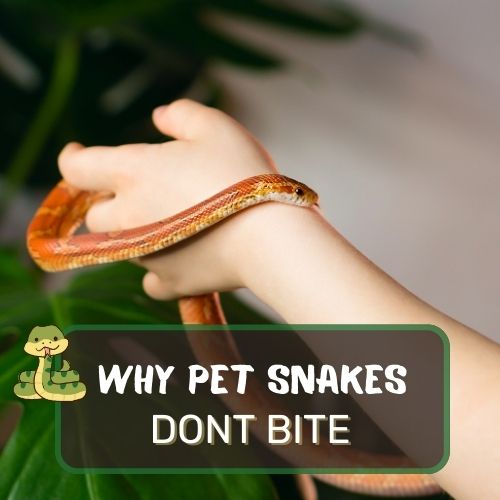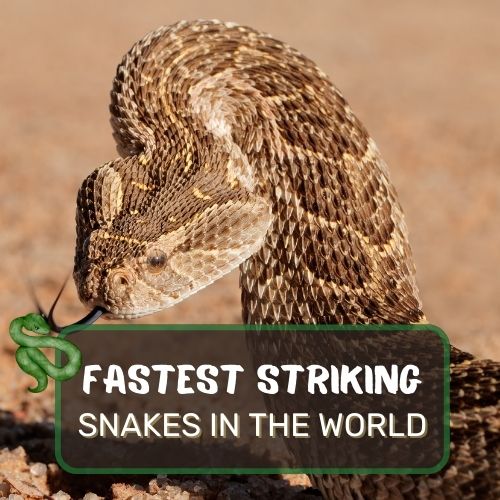
Welcome to the captivating world of snake care! In this article, we will explore the intriguing question: “Do snakes in captivity hibernate?”
Discover the factors that influence hibernation behavior in captive snakes, the differences between hibernation and brumation, and the necessary steps for preparing, monitoring, and caring for snakes during their dormancy period.
Unravel the unique hibernation tendencies of popular pet snake species and learn how to provide optimal conditions to ensure their well-being.
Whether you’re a seasoned snake enthusiast or a curious beginner, this article offers valuable insights into the hibernation habits of captive snakes, helping you become a responsible and informed snake owner.
Table of Contents
- 1 Do Snakes Hibernate In Captivity: Short Answer
- 2 Definition and Explanation of Hibernation
- 3 Hibernation in Wild Snakes
- 4 Hibernation in Captive Snakes
- 5 Common Snake Species and Hibernation
- 6 Preparing Snakes for Hibernation
- 7 Monitoring and Care During Hibernation
- 8 Exiting Hibernation and Post-Hibernation Care
- 9 FAQ
- 10 Conclusion
Do Snakes Hibernate In Captivity: Short Answer
Yes, some snakes do hibernate in captivity. Hibernation is a natural process observed in many reptiles, including certain snake species. In captivity, snake owners can replicate the environmental cues that trigger hibernation in the wild, such as lowering the temperature and reducing daylight hours.
Not all snake species require hibernation or brumation (winter dormancy) in captivity.
Some snakes, especially those from tropical regions, do not experience significant changes in temperature or daylight hours in their natural habitat, and therefore, they do not naturally undergo hibernation.
However, for snake species originating from temperate regions where they would naturally experience colder winters, hibernation is an essential part of their yearly cycle.
In captivity, providing these snakes with a period of hibernation is crucial for their overall health and well-being. Hibernation allows them to conserve energy, regulate their metabolism, and prepare for the coming breeding season.
It’s essential for snake owners to research the specific needs of their snake species and understand whether hibernation or brumation is necessary.
Properly preparing and monitoring captive snakes during this period is vital to ensure their successful transition back to normal activity and continued health in captivity.
Definition and Explanation of Hibernation

Definition of Hibernation and Its Purpose in Reptiles
Hibernation, also known as “winter sleep,” is a fascinating natural phenomenon observed in various animals, including reptiles like snakes.
During hibernation, snakes enter a state of dormancy characterized by a significant reduction in metabolic activity, body temperature, and overall movement.
The primary purpose of hibernation is to conserve energy during harsh weather conditions, especially in colder months when food becomes scarce. It’s Mother Nature’s way of helping these cold-blooded creatures survive the winter.
Comparison of Hibernation and Brumation
Before we delve further into snake hibernation, it’s crucial to understand the difference between hibernation and brumation. While they may seem similar, especially in their effects, there are key distinctions.
Brumation is a term specifically used for reptiles, including snakes, during their winter dormancy. Unlike true hibernators like bears, reptiles don’t enter a continuous deep sleep during brumation.
They may occasionally wake up, adjust their position, and even drink water if available. However, their metabolism remains significantly lowered, and they don’t actively search for food.
The Physiological Changes During Hibernation
When snakes enter hibernation, their bodies undergo remarkable physiological changes. Their heart rate slows down, and they breathe less frequently.
This reduction in metabolism allows them to conserve energy since their usual diet of rodents and other prey is scarce during winter.
Additionally, snakes find secure hiding spots, such as burrows or rock crevices, to protect themselves from harsh weather conditions and potential predators.
Hibernation in Wild Snakes

Hibernation Patterns in Wild Snake Populations
In the wild, hibernation is a critical survival strategy for many snake species, especially those living in temperate regions. As the temperature drops, snakes sense the environmental cues and prepare for their winter slumber.
They usually start hibernating in late fall and emerge in early spring when temperatures rise.
Factors That Influence Hibernation Behavior in Snakes
Various factors influence the hibernation behavior of wild snakes. The primary factor is temperature. Snakes are ectothermic, meaning their body temperature depends on the external environment.
As temperatures drop, their metabolic rate decreases, signaling the need to enter hibernation. Other factors include the availability of food, the length of daylight, and the snake’s overall health and condition.
Snake Species Known to Hibernate in the Wild
Several snake species are known to hibernate in the wild. For example, the Eastern Massasauga rattlesnake (Sistrurus catenatus) and the Timber rattlesnake (Crotalus horridus) are two North American snake species that undergo hibernation.
The European adder (Vipera berus) is another well-known hibernator, found in various parts of Europe.
Hibernation plays a crucial role in the life of captive snakes, and understanding their natural behavior is essential for providing them with optimal care in captivity.
Let’s explore how snake enthusiasts can replicate these conditions to ensure the well-being of their scaled companions.
Hibernation in Captive Snakes

Differences in Hibernation Behavior Between Wild and Captive Snakes
When it comes to hibernation, captive snakes may exhibit slightly different behavior compared to their wild counterparts.
In the controlled environment of captivity, snakes may not experience the same external cues, such as temperature fluctuations or changes in daylight, that trigger hibernation in the wild.
As a result, some captive snakes may not naturally enter hibernation.
Challenges for Hibernating Snakes in Captivity
Hibernating snakes in captivity can present some challenges for reptile enthusiasts. Unlike in the wild, where snakes can find natural hiding spots, creating a suitable hibernation environment in captivity requires careful planning.
Maintaining consistent and appropriate temperatures and humidity levels is crucial to mimic natural conditions.
Additionally, snake owners must closely monitor their pets throughout the hibernation period to ensure they remain healthy and don’t lose excessive body weight.
Common Practices and Techniques for Inducing Hibernation in Captive Snakes
To encourage hibernation in captive snakes, reptile keepers often replicate seasonal changes in temperature and daylight.
Lowering the ambient temperature gradually over several weeks can mimic the onset of winter and trigger hibernation behavior. Providing a dark and quiet space where the snake feels secure is also essential.
During hibernation, snakes should not be disturbed, as waking them up prematurely can be harmful to their health.
Common Snake Species and Hibernation

Overview of Snake Species Commonly Kept in Captivity
Snakes have long captivated the fascination of reptile enthusiasts, and several species are commonly kept in captivity due to their manageable size, docile nature, and striking appearances.
Some popular snake species found in captivity include the Corn Snake (Pantherophis guttatus), Ball Python (Python regius), and California Kingsnake (Lampropeltis getula californiae).
Each of these species has its unique characteristics and care requirements.
Hibernation Behavior and Requirements of Specific Snake Species
While not all snake species require hibernation or brumation in captivity, some do benefit from experiencing this natural cycle. For example, Corn Snakes, originating from North America, experience a period of brumation in the winter.
Ball Pythons, native to Africa, typically do not require hibernation in captivity. The California Kingsnake, found in various regions across the western United States, also tends to undergo a period of brumation.
Examples of Popular Pet Snake Species and Their Hibernation Tendencies
Let’s take a closer look at a couple of popular pet snake species and their hibernation tendencies:
- Corn Snake: Corn Snakes are well-known for their bright colors and docile temperament, making them a popular choice among snake keepers. In captivity, they often experience a brumation period during the winter months. To prepare a Corn Snake for brumation, gradually reduce the enclosure’s temperature and provide a safe, dimly lit space for the snake to rest. It’s essential to monitor their weight and behavior during this time to ensure they remain healthy.
- Ball Python: Ball Pythons are beloved for their small size and gentle disposition. Unlike some other snake species, Ball Pythons typically do not undergo hibernation in captivity. Instead, they prefer a stable and warm environment throughout the year. As responsible snake owners, it’s crucial to provide them with consistent temperatures and proper humidity levels.
Understanding the hibernation tendencies of specific snake species is vital for providing the best care possible.
Always research the natural habitat and behaviors of the species you plan to keep in captivity to ensure they thrive in their new environment.
Preparing Snakes for Hibernation

Necessary Preparations Before Hibernating Captive Snakes
Hibernating captive snakes requires careful preparation to ensure their well-being throughout the dormancy period. First and foremost, snake owners should assess the health and body condition of their pets.
Snakes should be in good health and have no underlying medical issues before entering hibernation or brumation. Sick or weak snakes may not be able to handle the stress of the dormancy period.
Temperature, Humidity, and Lighting Requirements During Hibernation
Maintaining appropriate environmental conditions is crucial when preparing snakes for hibernation. The ambient temperature should gradually decrease to simulate the onset of winter.
However, it’s essential to avoid sudden temperature drops, as this could stress the snakes and adversely affect their health. Humidity levels should be adjusted accordingly to match the natural conditions of their wild habitat.
As for lighting, during hibernation or brumation, snakes should experience reduced daylight hours. Provide them with a consistent light cycle that mimics the gradual decrease in daylight observed in the wild during the winter months.
Feeding and Hydration Considerations Prior to Hibernation
Before hibernation or brumation, snake owners should ensure their pets are well-fed and adequately hydrated.
Snakes enter the dormancy period with stored energy reserves, and a healthy feeding regimen is vital to build up these reserves.
Providing a balanced diet and ensuring the snake is well-hydrated will contribute to a successful hibernation experience.
As a responsible snake owner, it’s crucial to closely monitor your pet’s behavior and health during the hibernation or brumation period.
After the dormancy period ends, gradually reintroduce normal environmental conditions and feeding schedules to allow the snake to transition smoothly.
Properly preparing snakes for hibernation and providing the necessary care during this period will contribute to their overall well-being and longevity in captivity.
Monitoring and Care During Hibernation

Importance of Monitoring Hibernating Snakes
During the hibernation or brumation period, it’s crucial to regularly monitor captive snakes to ensure their well-being.
While snakes naturally reduce their activity and metabolism during this time, monitoring allows snake owners to detect any potential health issues or complications that may arise.
Regular checks can also help identify if the snake’s hibernation conditions are appropriate and need adjustment.
Signs of Health Issues or Complications During Hibernation
Snake owners should be vigilant for any signs of health issues during hibernation. Common signs of problems include excessive weight loss, lethargy, unusual breathing patterns, or any visible abnormalities.
If any of these signs are observed, it’s essential to consult with a reptile veterinarian promptly.
Strategies for Maintaining Optimal Conditions During Hibernation
Maintaining optimal hibernation conditions is critical for the well-being of captive snakes. Snake owners should regularly check the temperature and humidity levels within the hibernation enclosure and make adjustments as needed.
Providing a safe and stress-free environment during hibernation is essential for the snake’s overall health and successful completion of the dormancy period.
Exiting Hibernation and Post-Hibernation Care

Process of Gradually Waking Snakes from Hibernation
As the winter season comes to an end, it’s time to gradually wake the snakes from hibernation or brumation. This process should be done slowly to avoid shocking the snake’s system.
Slowly increase the enclosure’s temperature and restore regular daylight hours. The snake may take some time to become fully active again, and this gradual transition helps ease them back to their regular routine.
Steps to Follow for Reintroducing Food and Adjusting Conditions
After waking from hibernation, it’s essential to reintroduce food to the snake gradually. Start with smaller prey items and gradually increase the size as the snake’s appetite returns to normal.
Providing fresh water is crucial, as rehydrating the snake is a priority after the dormancy period.
While adjusting conditions after hibernation, snake owners should monitor the snake’s behavior and overall health. If any issues arise during this transition phase, consult a reptile veterinarian for guidance.
Post-Hibernation Health Assessment and Potential Concerns
After hibernation, snake owners should conduct a thorough health assessment of their pets. Check for any weight loss, signs of dehydration, or respiratory issues.
If the snake shows any signs of health concerns, seeking professional veterinary care is essential.
During the post-hibernation period, snakes may be more vulnerable to stress and illness. It’s important to minimize disturbances and provide a stress-free environment to aid in their recovery.
As the snake regains its normal activity levels and feeding patterns, snake owners can resume their regular care routine, ensuring that the enclosure’s conditions, temperature, and humidity are appropriate for the species.
By carefully monitoring, managing, and providing appropriate post-hibernation care, snake owners can help their pets transition smoothly and maintain their health and vitality in captivity.
FAQ
What Do Snakes Do While Hibernating?
While hibernating, snakes enter a state of dormancy characterized by reduced metabolic activity. They become less active, and their heart rate and breathing slow down significantly. Snakes seek out secure hiding spots to protect themselves from the cold and potential predators. During this time, they conserve energy and rely on stored fat reserves to survive.
How Do You Know If a Snake Is Hibernating?
Identifying whether a snake is hibernating or brumating can be challenging, as they may appear lethargic during both processes. However, key signs of hibernation include the snake’s prolonged inactivity, lowered body temperature, reduced interest in food, and hiding away in a secluded spot. It’s essential to observe these behaviors and consider the time of year to determine if the snake is undergoing hibernation or brumation.
What Triggers Brumation?
Brumation is primarily triggered by changes in photoperiod, the length of daylight hours, rather than temperature fluctuations. As the days become shorter in the fall, some snake species, especially those from temperate regions, sense this change and begin to prepare for brumation.
How Long Does Brumation Last For?
The duration of brumation can vary depending on the species and environmental conditions. In captivity, brumation typically lasts for a few weeks to a few months. In the wild, some snake species may remain in brumation for several months during the winter.
Conclusion
In conclusion, understanding hibernation and brumation is essential for providing the best care for captive snakes.
These natural processes allow snakes to conserve energy during challenging conditions, and replicating them in captivity is vital for their well-being.
Throughout the article, we explored the definition and purpose of hibernation in reptiles, as well as the differences between hibernation and brumation.
We discussed various snake species and their tendencies towards hibernation or brumation in captivity. Proper preparation, monitoring, and post-hibernation care are crucial for ensuring the health of captive snakes during these dormant periods.
As responsible snake owners, it’s our duty to mimic natural conditions as closely as possible, providing appropriate temperatures, humidity, and lighting during hibernation or brumation.
We must remain vigilant in monitoring our snakes’ health and be prepared to seek professional veterinary care if any issues arise.
Remember, each snake species is unique, so conduct thorough research and consult with experienced reptile keepers or veterinarians to provide the best care possible.
By respecting and understanding their natural behaviors, we can ensure our scaled companions thrive and flourish in captivity.




0 Comments